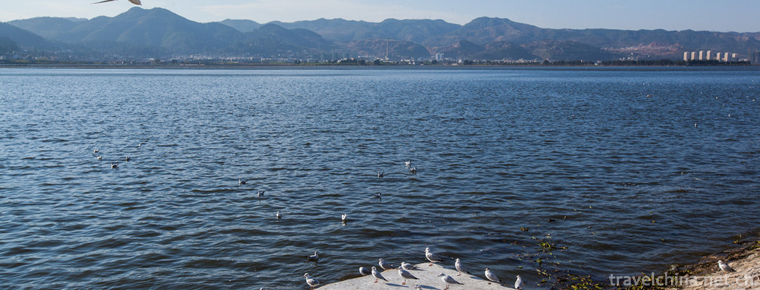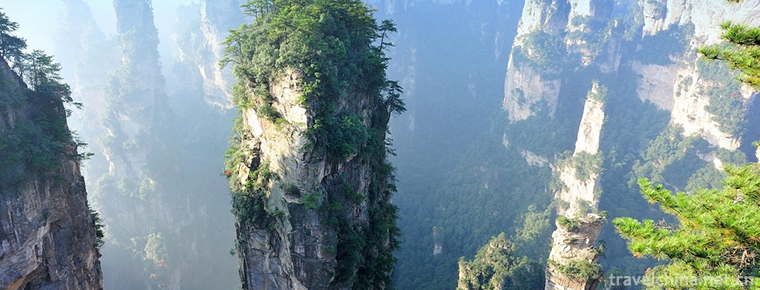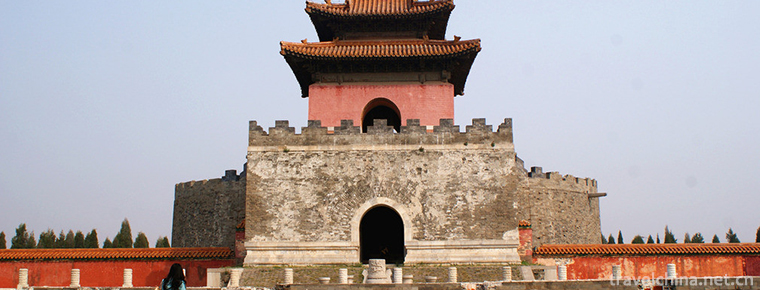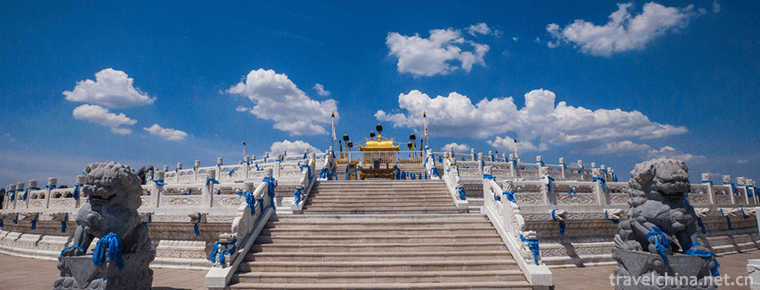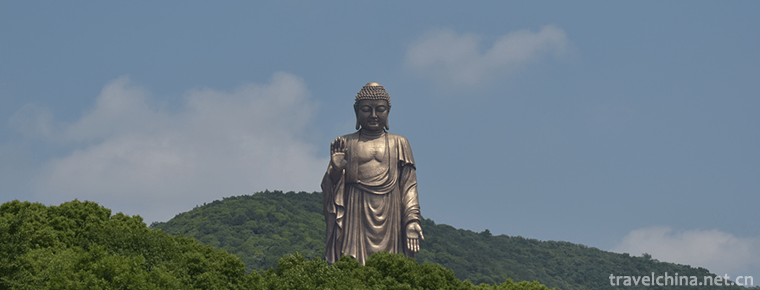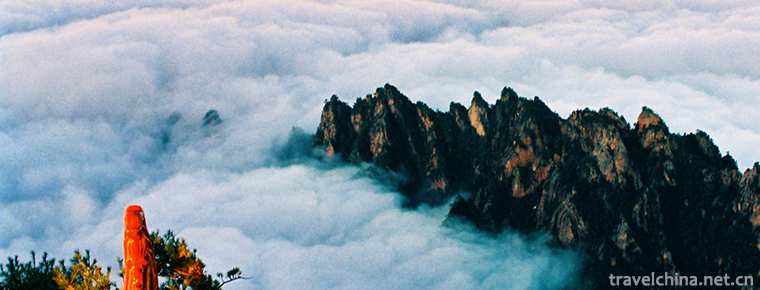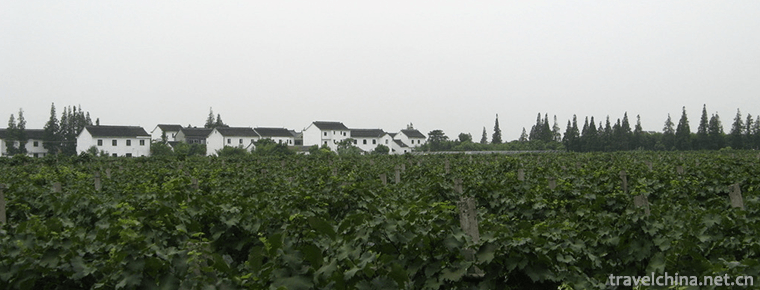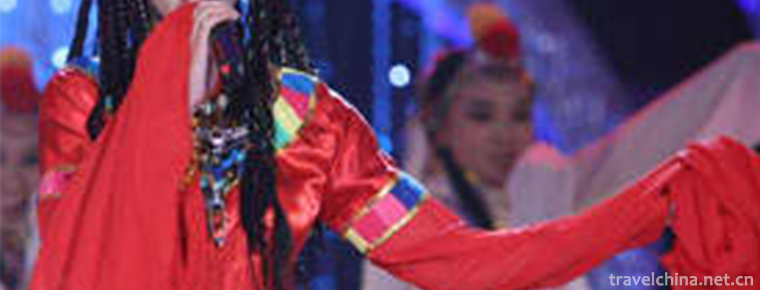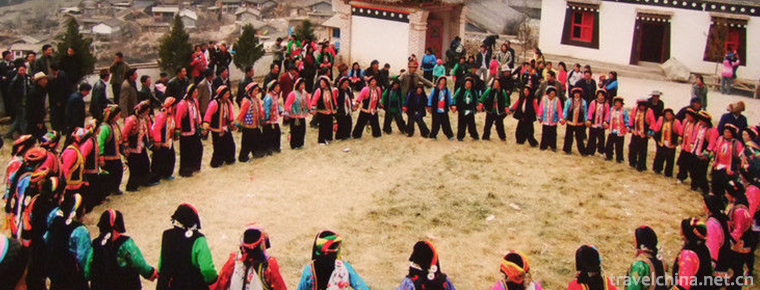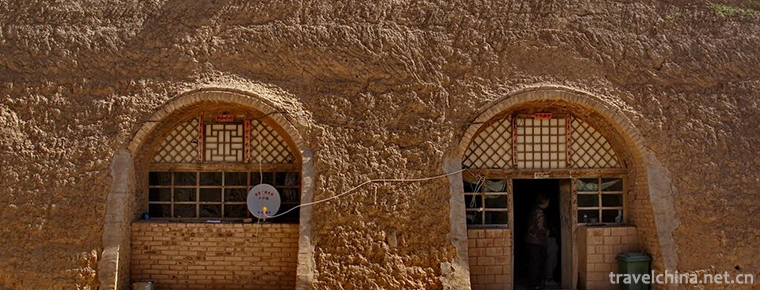Sanhui Pavilion Club
Sanhui Pavilion Club
Sanhui Caiting Pavilion is a local traditional folk cultural activity that performs in streets or squares on March 16-18 of the lunar calendar every year. Its artistic form of performance is ingenious and unique, which can be regarded as one of the best in China. It was formed in the early Qing Dynasty and flourished from the middle and late Qing Dynasty to the Republic of China. The main contents of the pavilion are to raise the pavilion, worship the "Three Ladies" and watch the pavilion for three consecutive days. The Pavilion is huge and lively, and it is like the Spring Festival. Many times participated in the provincial and municipal major cultural activities. Sanhui Pavilion will pour into the simple feelings of the local working people and glow the unique glory of modern Chinese traditional culture with its unique artistic thinking and strong breath of life.
On June 7, 2008, Sanhui Pavilion will be listed in the second batch of national intangible cultural heritage list with the approval of the State Council.
historical origin
Tracing back to its origin, the art of colorful pavilions originated from the "seeking for death" in the "hundred operas" of the Han Dynasty. "Bai Opera" is the general name of acrobatic performances in ancient music and dance. It was called "Bai Opera" in Qin Dynasty, Jiao Jiao Di Opera in Han Dynasty, Sanyue in Southern and Southern Dynasties and Dai Gan in Tang Dynasty. "Hundred Opera" includes carrying tripod, searching, swallowing knife, spitting fire and so on. Among them, "Seeking Boat" belongs to high-pole acrobatics. Performers perform on poles, which should be said to be the germination of the colorful Pavilion art.
By the Song Dynasty, the "search for death" became "Gaotai social fire". The performers stand on wooden boxes and carry wooden boxes by Lifu, accompanied by stilts, dry boats, bamboo horses, Yangko, dragon dance, lion dance, big head baby and so on. The performance venue changes from fixed position to mobile space. The audience moved as the wooden box moved, and the scene was very warm. Usually, a high platform and a model are based on some historical stories. "Walking with light song, dancing with real madness" (Fan Chengda's Thirty-two Rhymes of Wuzhong Festival in the Upper Yuan Dynasty), won the audience with funny jokes.
In the Yuan Dynasty, music and dance were diverted from acrobatics, and the concept of "hundred operas" was out of date. From "lifting boxes" to "lifting pavilions", one is that the number of layers has increased, the other is that of adults to children, and the third is that one iron rod runs through each layer. By the Ming Dynasty, "Elevation Pavilion" was prevalent in Xingxiang Walking Club. In July of the fifth year of Zhenzhen, in order to pray for rain, a parade of "Lifting Pavilion" was formed. At that time, "Lifting Pavilion" was much the same as today's "Lifting Pavilion".
By the Qing Dynasty, "Lifting the Pavilion" had entered its heyday, and the way of setting up and performing the "Lifting the Pavilion" had also changed. At the same time, there was a "heavy cabinet", and the way of performance was another scene. Zhang Hanzai described in Tianjin Yang Liu Qing Xiao Zhi as follows: "There are three heavy cabinets in the meeting, and one or two people are on top of them, so they are heavy. Its method is to tie a three-foot-long iron bundle to the shoulder and back, stung a thin and wise child who is eight or nine years old, decorated as a beautiful woman, hiding its iron bundle, dressed up as a fake-handed tray to cover the bowl, on which the beautiful woman tilts her feet and Phoenix shoes, and the mother-in-law group fan dances. Or stand on the cage hook, or on the axle of Pahong, the beautiful and luxurious clothes and ornaments are beyond the reach of all parties.
Sanhui Caiting Pavilion will be formed in the early Qing Dynasty and flourished from the middle and late Qing Dynasty to the Republic of China. The colorful Pavilion is the most prominent form of cultural and artistic performance of the pavilion. On the platform of about 4 square meters, it erects an iron pole and stretches its bracket horizontally and obliquely. It will lay 3-5 stories of characters and plots extracted from drama or life, and be 8-10 meters high. The Pavilion is glittering and glittering, like a falling pavilion. It shows the artistic features of "high, surprising, dangerous, strange and ingenious". There are also more than 10 kinds of folk literature and art accompanied by the performance of the colorful pavilion. During the colorful Pavilion meeting, "men and women touring, filling the streets and filling the alleys, neighboring ladies and gentlemen not far hundreds of miles to go to the grand meeting, almost like the whole country crazy."
Sanhui Town is located in the west of the north section of Huaying Mountain in eastern Sichuan. It crosses the Zhouhe River, Bahe River and Qujiang River and forms the Sanjiang Six Wharfs. It has developed transportation, abundant products, businessmen and businessmen gathered together, and its economy is active. It forms a special geographical environment in which the colorful pavilions will produce development. The emergence of the color Pavilion can be traced back to Gao Gan's skill of "Hundred Opera" in the Han Dynasty. The stone carvings of Hanque in Quxian County are vividly depicted. In the Tang Dynasty, the "Hung" was separated from acrobatics into "Gaotai Community Fire", and its main feature is to express the theme by the figure shape tied to the platform. By the Ming Dynasty, it had developed into "Xingxiang Walking Club". Its main content was "Lifting Pavilion", which is the same as today's pavilion. By the Qing Dynasty, there were pavilions in Sanhui, mainly organized by residents'free organizations. The pavilions in Sanhui are closely related to the unique cultural phenomena in the region. The pavilions first carry up the "Three Holy Ladies" to revere gods and entertain gods and pray for children to fight disasters. In the early years of the Republic of China, the pavilions were mainly organized by chambers of commerce, trade associations and ritual societies. The contents of the pavilions not only inherit the tradition, but also combine with the real life, and have the theme content reflecting the spirit and style of the times.
Folklore Legend
Before the liberation of Sanhui, there were more than 10 temple fairs. The most famous one was "Tuzu Temple Fair" on March 18, which is now located in the office of Sanhui Nongle Forest Farm. The "March 18" was the birthday of the "Mother Earth". According to legend, "Mother Earth" was originally the sacrificial object of feudal rulers in successive dynasties, while the original worship in Sanhui Tuzu Temple was "the mother of giving children", "the mother of acne", "the mother of Ma" (commonly known as "the three saints"), that is, the incarnation of "Mother Earth".
At the beginning of the Qing Dynasty, the incidence of measles in Sanhui area accounted for 84% of the total number of children, and the mortality rate accounted for 70% of the total number of children. According to the feudal concept, "there are three kinds of filial piety, but no later is great". In the hearts of the common people, they are most concerned about their descendants'reproduction and whether their descendants can pass through the two barriers of hemp and pox smoothly. Therefore, people especially worship the "Three Ladies".
For this reason, people worship incense wax, wine and meat, or red silk, clothes, and pray for "sending the daughter" to give the boy, "the mother of the pox" and "the mother of the mama" to relieve disaster, and compete to send children dressed up on the pavilion for three consecutive years, in order to amuse the "three virgins" like, the picture "small children" good belt. Therefore, every year during the "March 18" and "Three Ladies" Temple Fair, Sanhui will set up pavilions to honor the "Three Ladies".
Performing Form
The colorful Pavilion concentrates the moving scenes in the drama on a platform, or layers the main characters and backgrounds in the story on the iron rods and rings which are seven or eight meters high in Taichung. The design is ingenious, the shape is strange, the color is gorgeous, the craftsmanship is exquisite and unique, which can be said to be one of the best in China. The color pavilion, which is mainly modeled, is also a comprehensive reflection of many artistic contents and knowledge skills, such as painting, music, literature, ironwork, woodworking, embroidery, sewing, mathematics, mechanics and so on. It is a mass collective creation. In recent years, Sanhui Pavilion Club has paid attention to inheriting and carrying forward the traditional folk art forms with a long history and tradition, as well as expressing the new socialist people, new things, new ideas and fine moral customs. It has vividly integrated the contents of Chinese women's volleyball team's championship, family planning, young and old people's courageous climbing the peak, which has both traditional color and the spirit of the times, making the pavilion even more colorful. Add luster and splendor.
Tens of thousands of people flocked to the ancient town of northeast Sichuan from all sides, scrambling to see the rare three-way pavilion. In the cheerful Gong playing, four colorful pavilions named "boat borrowing umbrella", "Flame Mountain", "Hanjiang Pass" and "walking on the grass-roots" showcased in front of the world after the performances of car lights, lion dance, general master lifting and stilts. Four color pavilions are about 8 meters high, and several porters walk slowly along the road to tour. The characters on the pavilions are glittering and falling, which makes the audience worried and surprised. On the iron ring of the colored Pavilion named "Flame Mountain", the princess Ting Ting Yuli, dressed in grease and powder, and the princess Ting Ting, dressed in theatrical costumes, has beautiful flowers and Phoenix crowns, and her clothes are like sails, and the pearls shine brightly. The Monkey King is in the middle, sometimes somersaults between the two iron rings, which seems to fall aslant and surprising in danger. The ox demon king is on the base, with one demon on the left and one demon on the right. On the top of his head, a banana fan is obliquely supported, and the corners of the fan are stacked with "8" shaped iron rings. Ship Borrowing Umbrella,
"Flame Mountain" and "Han Jiangguan" are derived from the plots and characters in the classical novels "White Snake Biography", "Journey to the West", "Yang Jia Jiang Jiang Jiang Jiang", respectively. Taking the grass-roots level reflects the vivid animation of Quxian Party members and cadres'practice of mass line education. In addition to these four high pavilions, there are three low pavilions, namely "Madame Dou", "Madame Ma", "Madame Giving a Son". In order to inherit and innovate the art of the colorful pavilion, the design of the colorful Pavilion pays attention to the combination of tradition and innovation, and integrates the elements of the times into the content and form of the performance.
Sanhui Pavilion will take Pavilion shape and performance as its main content, integrating ironwork, woodworking, embroidery, sewing and architecture into one, integrating literature, painting, sculpture and mechanics into one stove, with ingenious structure, peculiar shape, gorgeous color and exquisite craftsmanship, highlighting the artistic characteristics of "high, surprising, dangerous, strange and ingenious", which is the treasure of folk art in eastern Sichuan.
Program Content
Since the Song Dynasty, "Gaotai Society Fire" programs are mostly based on some historical stories, such as "Hong Men Banquet" and "Boat Borrowing Umbrella".
In the Yuan, Ming and Qing Dynasties, the content of the program "Lifting the Pavilion" included characters in mythological stories, such as Guanyin, 18 Arhats, Jiang Taigong, and other drama fragments, such as "Overlord Chu", "Single Knife Club" and "Eight Immortals Qingshou".
After liberation, the Sanhui Pavilion not only inherited the traditional programs such as "Flame Mountain", "Three Beats of White Bones", "Eight Immortals Crossing the Sea", "Chang'e Running to the Moon", but also created programs such as "Liu Hulan", "White Haired Lady" and "Sports World Qunying" and "New Civilization Wind", which reflected modern drama characters.
Folklore Characteristics
Throughout the country's pavilions (some are called "lifting pavilions" and some are called "floating colors"), only the Sanhui Pavilion is ingeniously conceived, unique in shape, and can weigh four to five floors. The rest are from one to two floors, because each of its second or third floors needs to show color, so it is called "Sanhui pavilion".
Up to the 1980s, Sanhui Pavilion became more and more prosperous. From March 16 to 18, the annual lunar calendar is the pavilion meeting in Sanhui Town. These three days, "Gao Zhu Cai Pavilion, four people swagger across the city" (Quxian Chronicle), commonly known as "lifting pavilion". During the colorful Pavilion meeting, "men and women touring, filling the streets and jamming the lanes, and neighboring ladies and gentlemen not far from hundreds of miles to go to the grand occasion, the whole country is in a state of ecstasy."
On the platform of about 4 square meters, an iron pole is erected, and the bracket is stretched horizontally and obliquely. The characters and plots extracted from drama or life are stacked on three to five floors, 8 to 10 meters high. The Pavilion is glittering and glittering. It seems that the pavilion is not falling down, and the audience is distracted and amazed. It highlights the artistic features of "high, surprising, dangerous, amazing and ingenious".
"Sanhui Pavilion Club" is a unique folk art in China. It integrates ironwork, woodworking, embroidery, sewing and architecture. It combines literature, painting, sculpture and mechanics. It has exquisite structure, magnificent color and exquisite craftsmanship. It is praised as a treasure of folk culture and art in northeastern Sichuan.
Current Situation of Development
After 1949, Sanhui Pavilion will glow with the times, form a pattern sponsored by the government and non-governmental organizations, and become the main traditional folk cultural activities to promote local economic and cultural development. Sanhui Pavilion will be deeply popular in the local and adjacent counties and cities. It plays an important role in the traditional folk culture and art activities in the region. It is the crystallization of the wisdom of Sanhui people from generation to generation, and has high academic and practical value.
Sanhui Pavilion has been performing at large-scale cultural and artistic events or material trade fairs in counties, cities and provinces for many times. For propaganda and reporting by mass media, Sanhui Pavilion has become a brand of local and adjacent regional economic and cultural development.
Chen Qing'an is the eighth generation successor of Sanhui Caiting Pavilion.
Sanhui Town was approved by the State Council in 2008 and named "Town of Chinese Folk Culture and Art" by the Ministry of Culture. For various reasons, "Sanhui Lottery Pavilion Club" has been suspended since 1992. In order to publicize and protect the national intangible cultural heritage, inherit the excellent folk culture of Dazhou, practice the Party's mass line and deliver traditional culture to the people's doors, 22 years later, local Party committees and governments overcame many difficulties and reopened the "colorful Pavilion feast", offering a fine cultural feast and visual feast to the local people.

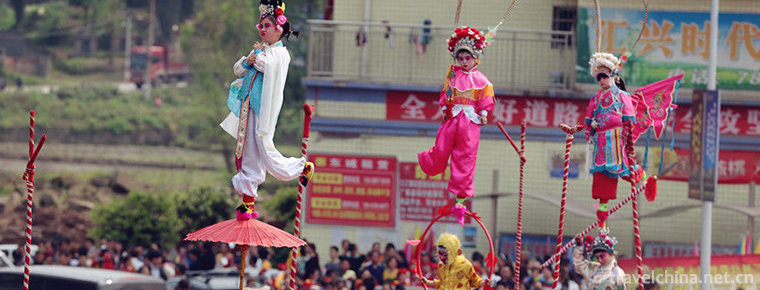
-
Dianchi Lake
Dianchi, also known as Kunming lake, Kunming pool, Yunnan Nan Ze....
Views: 182 Time 2018-10-21 -
Qinghai Lake
In Qinghai Lake, the Tibetan language is called "the weming cloth" .
Views: 258 Time 2018-10-23 -
zhangjiajie national forest park Avatar Filming place
Zhangjiajie national Forest Park is located in Zhangjiajie City, northwest of Hunan province. On September 25, 1982, with the approval of the State Council of the People's Republic of China.
Views: 210 Time 2018-10-28 -
Eastern Royal Tombs of the Qing Dynasty
Eastern Royal Tombs of the Qing Dynasty is located 30 kilometers northwest of Zunhua City, Tangshan City, Hebei Province. It is 125 kilometers west of Beijing City and covers an area of 80 square kil.
Views: 267 Time 2018-11-24 -
Genghis khan mausoleum tourist area
Genghis khan mausoleum tourist area, also known as Chengling Tourist Area, commonly known as the Eastern Union Scenic Area (not Genghis Khanling).
Views: 331 Time 2018-12-01 -
Grand Buddha at Ling Shan
Lingshan Grand Buddha is a world famous scenic spot, located between the mountains and rivers of Mashan National Scenic Spot in Wuxi City, Jiangsu Province..
Views: 257 Time 2018-12-06 -
Old boundary ridge of Funiu Mountain
Laojieling is located in the north of Xixia County, Nanyang City, Henan Province. It is located in the upper part of the south slope of Funiu Mountain.
Views: 131 Time 2018-12-09 -
Malu Grape Theme Park
Malu Grape Theme Park is located in Malu Town, Jiading District, Shanghai. It is a grape industry base and agricultural tourism demonstration site that integrates grape planting, production, scientifi.
Views: 116 Time 2019-02-06 -
Tibetan folk songs
Tibetan folk song is a magnificent flower in Tibetan folk literature, with profound ideological and high artistic quality. Throughout the development process of Tibetan folk songs.
Views: 216 Time 2019-04-15 -
Duodi dances
Multi-place dance, Tibetan folk dance, is a unique way for Tibetan people to dance and sing. It mainly distributes in three areas of Zhouqu County, Gansu Province.
Views: 347 Time 2019-04-28 -
Cave Building Techniques
Cave dwelling is an ancient dwelling form of residents on the Loess Plateau in Northwest China. The history of cave dwelling can be traced back to more than 4,000 years ago. The Chinese people creativ.
Views: 99 Time 2019-07-11 -
wolong national nature reserve
Wolong Nature Reserve is located in the southwest of Wenchuan County, Aba Tibetan and Qiang Autonomous Prefecture, Sichuan Province, on the southeast slope of Qionglai mountains, 130 kilometers away from Chengdu.
Views: 250 Time 2020-11-06
